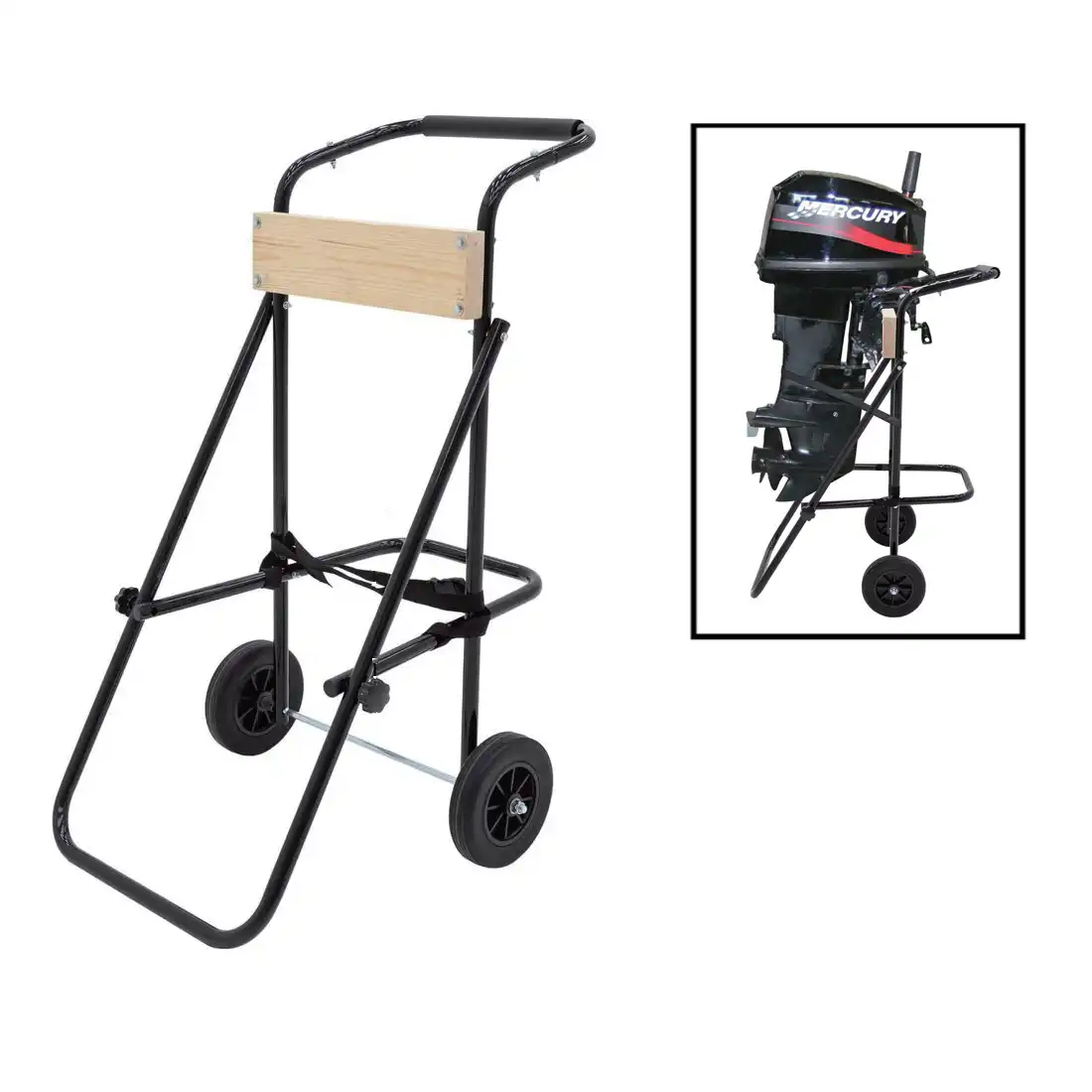Outboard Motor Cart: Safety and Best Practices
Outboard motor carts, also known as outboard motor dollies or boat motor carts, are essential tools for boat owners and marine enthusiasts. These specialized carts are designed to safely transport and maneuver heavy outboard engines, making maintenance and storage tasks much easier. When using an outboard motor cart, it's crucial to prioritize safety and follow best practices to protect both the equipment and the individuals involved. This comprehensive guide will explore the key aspects of using outboard motor carts effectively, including proper loading techniques, maintenance tips, and storage considerations. By adhering to these guidelines, you can ensure the longevity of your outboard motor and minimize the risk of accidents or injuries during transportation.

Safe Loading and Unloading Techniques
Proper Positioning and Alignment
When loading an outboard motor onto a cart, it's crucial to position the cart correctly in relation to the motor. Ensure the cart is on a level surface and aligned with the motor's center of gravity. This alignment helps distribute the weight evenly across the cart's frame, reducing the risk of tipping or instability during transport.
Securing the Motor
Once the motor is positioned on the cart, it's essential to secure it properly. Most outboard motor dollies come equipped with straps or clamps designed specifically for this purpose. Use these securing mechanisms to fasten the motor tightly to the cart, preventing any movement or shifting during transportation. Double-check all connections to ensure they're snug and secure before moving the loaded cart.
Lifting and Lowering Safely
The process of lifting and lowering an outboard motor onto a cart requires careful attention to ergonomics and safety. Always use proper lifting techniques, such as bending at the knees and keeping your back straight. If the motor is particularly heavy, consider using a mechanical lift or enlisting the help of another person to avoid strain or injury. When lowering the motor onto the cart, do so slowly and steadily to maintain control and prevent sudden impacts that could damage the equipment.
Maintenance and Care for Outboard Motor Carts
Regular Inspections
To ensure the longevity and reliability of your outboard motor cart, conduct regular inspections of its components. Check for signs of wear, damage, or corrosion on the frame, wheels, and securing mechanisms. Pay special attention to the cart's weight-bearing parts, such as the axles and support brackets. Addressing any issues promptly can prevent more serious problems and extend the cart's lifespan.
Lubrication and Cleaning
Proper lubrication is essential for maintaining smooth operation of your boat motor cart. Apply a suitable lubricant to all moving parts, including wheel bearings and pivoting joints, at regular intervals. Additionally, keep the cart clean by washing it with fresh water after each use, especially if it has been exposed to saltwater environments. This cleaning routine helps prevent corrosion and ensures all components function as intended.
Storage Considerations
When not in use, store your outboard motor cart in a dry, protected area. If possible, keep it indoors or under a cover to shield it from the elements. For long-term storage, consider elevating the cart slightly to reduce pressure on the tires and prevent flat spots from forming. If your cart has any removable or adjustable parts, ensure they are properly secured or removed to prevent loss or damage during storage.
Navigating Challenges and Enhancing Safety
Handling Uneven Terrain
While outboard motor carts are designed for use on flat surfaces, you may occasionally need to navigate uneven terrain. When faced with slopes or rough ground, take extra precautions to maintain control of the loaded cart. Move slowly and deliberately, keeping a firm grip on the handle. If possible, enlist the help of another person to guide or support the cart from the opposite end. Always prioritize safety over speed when maneuvering through challenging environments.
Weather Considerations
Weather conditions can significantly impact the safe use of outboard motor carts. In wet or icy conditions, surfaces become slippery, increasing the risk of accidents. If you must use the cart in adverse weather, take extra care to ensure solid footing and maintain a secure grip on the handle. Consider using non-slip mats or temporary traction aids on slippery surfaces to improve stability. In extreme weather, it's often best to postpone transport until conditions improve.
Ergonomic Improvements
To enhance safety and comfort during use, consider making ergonomic improvements to your outboard motor cart setup. Adjustable handles can accommodate users of different heights, reducing strain during prolonged use. Adding cushioned grips to the handles can improve comfort and reduce the risk of hand fatigue. For frequently used carts, investing in high-quality, low-resistance wheels can significantly reduce the effort required to move heavy loads, minimizing the risk of overexertion injuries.
Conclusion
Mastering the safe use and maintenance of outboard motor carts is crucial for anyone working with boat engines. By following these best practices for loading, unloading, maintenance, and navigation, you can significantly reduce the risk of accidents and ensure the longevity of both your equipment and the cart itself. Remember that safety should always be the top priority when handling heavy machinery, and taking the time to implement these guidelines will pay off in the long run with smoother operations and fewer incidents.
Contact Us
For more information about our range of high-quality outboard motor carts and other marine maintenance tools, please don't hesitate to contact us at info@runva.com.cn. Our team of experts is ready to assist you in finding the perfect solutions for your boat maintenance needs.
References
Johnson, M. (2022). The Comprehensive Guide to Outboard Motor Maintenance. Marine Technology Press.
Smith, A. & Brown, R. (2021). Safety Protocols in Marine Equipment Handling. Nautical Safety Journal, 15(3), 78-92.
Williams, E. (2023). Ergonomics in Boat Maintenance: Reducing Workplace Injuries. Boating Industry Review, 28(2), 45-57.
Chen, L. et al. (2022). Corrosion Prevention in Marine Equipment: A Systematic Approach. Journal of Maritime Engineering, 41(4), 312-326.
Thompson, K. (2021). Best Practices for Outboard Motor Transportation and Storage. Boater's Handbook (5th ed.). Seaside Publishing.
Davis, R. & Miller, S. (2023). Innovations in Marine Maintenance Equipment Design. International Conference on Marine Technology Proceedings, 112-125.

_1737625693698.webp)

